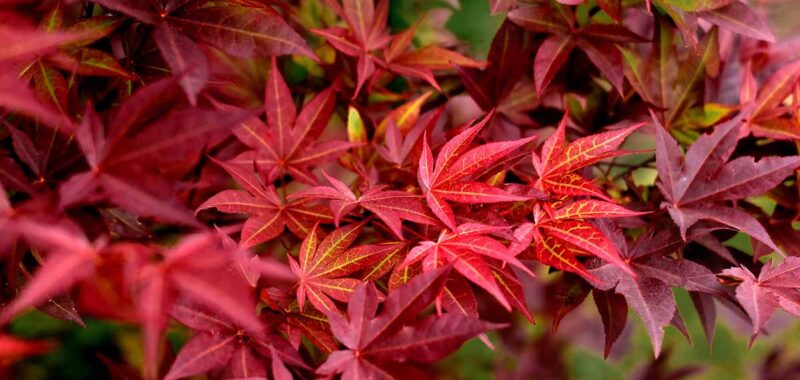2. Late Freeze
If you’ve ever grown a fruit tree, this is going to sound familiar.
As the tree starts to develop leaf buds, they’re susceptible to damage if there happens to be a late freeze. A late freeze can kill the emerging leaf buds.


Japanese maples aren’t extremely sensitive to frost, but a hard freeze that lasts a while when the buds are developing might be enough to kill them and prevent the tree from producing foliage.
Most maple trees will develop new buds after the initial ones are killed. Others might shed the branch. Either way, there isn’t anything you can do but support the tree.
3. Root Rot
Japanese maples love moisture, but not too much. Phytophthora root rot is caused by oomycetes in the Phytophthora genus.
The pathogens need water to move and reproduce, so they thrive in soil with lots of moisture.
Symptoms will depend on how far the disease has progressed and what time of year it takes hold.
In the early stages of the disease, the older part of the branches will leaf out, but young tips won’t, as they suffer from dieback. As it progresses, entire branches might die.
The tree might also leaf out late or appear to be stunted and sad.
It’s kind of hard to be absolutely sure you’re dealing with root rot because the symptoms can be kind of nebulous.
The easiest way to tell what’s going on is to dig down and look at the roots. There will be no feeder roots, which are the smaller, more delicate roots.
In advanced stages, the larger roots will be soggy and black.
You’ll need to drench the soil in fungicides to kill the pathogens. There are several options that will work.
Copper is a good place to start, but more advanced cases need something more like a product that contains hydrogen peroxide and phosphorous acid or Bacillus subtilis.
Serenade ASO has proven to not only prevent but also kill Phytophthora pathogens.


Serenade ASO
Follow the manufacturer’s directions closely and your tree should be on the road to recovery in no time at all.
You can find Serenade ASO available at Arbico Organics.
4. Verticillium Wilt
If part of the Japanese maple is dead, while other parts appear to be perfectly fine, it’s possible that your tree is suffering from verticillium wilt.
Caused by the fungus Verticillium dahliae, this disease restricts the ability of the tree to absorb and move water.
It can kill an entire tree, but you’ll typically see portions of the tree die before the entire specimen succumbs. So, if half of your tree is leafing out and the other half is bare, it could be vert.

